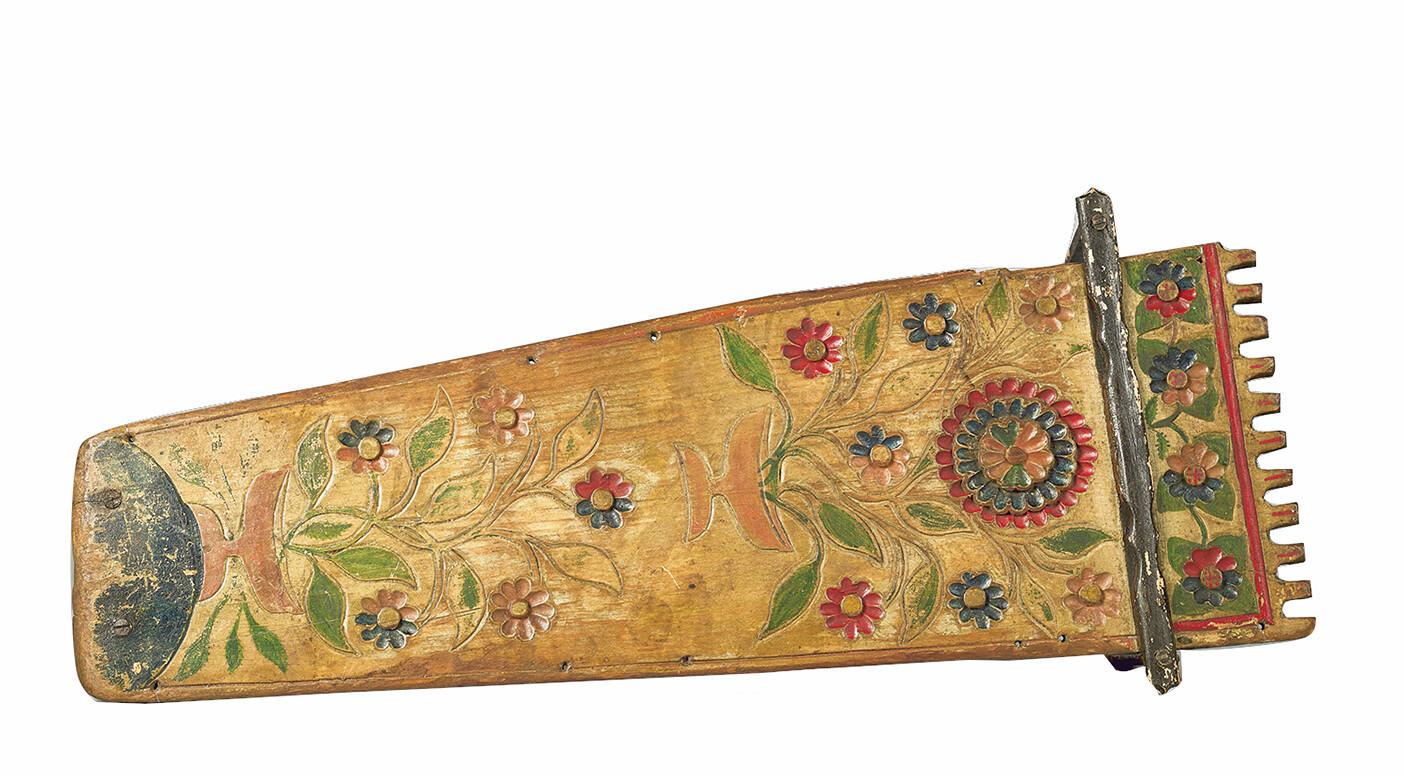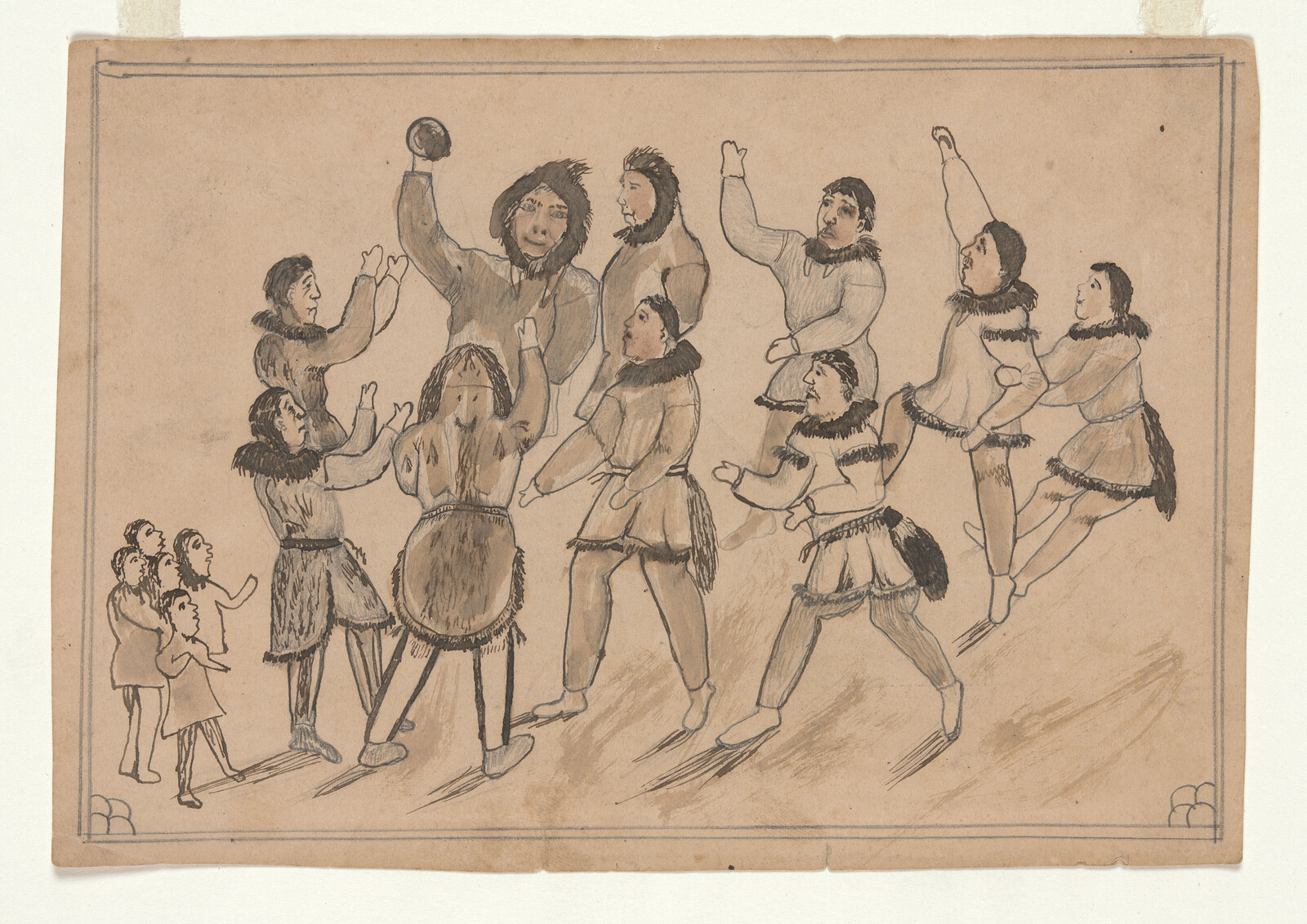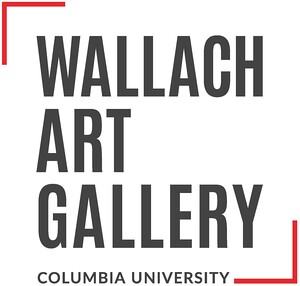December 4, 2021–March 12, 2022
Lenfest Center for the Arts, 6th Floor
615 W 129th St
New York, NY 10027
USA
Hours: Wednesday–Saturday 12–6pm
T +1 212 854 6800
wallach@columbia.edu
From the Collection of Art Properties.
Collecting Thoughts: A Conversation: March 7, 6:30pm. This online program features the four outstanding contemporary Indigenous artists in Object Relations: Indigenous Belongings—Skawennati, Wendy Red Star, Sonya Kelliher-Combs, and Dakota Mace—in conversation with Indigenous curator Alan Michelson. Topics will include the artists’ thoughts about ancestral Indigenous objects held in non-Indigenous collections, the artists’ relationships to customary materials and techniques, and their current projects.
The Wallach Art Gallery at Columbia University’s Lenfest Center for the Arts is pleased to present Object Relations: Indigenous Belongings. The exhibition showcases a selection of Native American art and cultural heritage objects held in the Collection of Art Properties at Columbia University. These include cultural materials from daily life related to children, the Indigenous future—wedding moccasins, a cradleboard, a woven child’s blanket, as well as a suite of drawings—by unknown makers from four tribal nations—Apsáalooke (Crow), Kanienʼkehá꞉ka (Mohawk), Diné (Navajo), and Inupiaq. They are paired with works by four contemporary Indigenous women artists—Wendy Red Star, Skawennati, Dakota Mace, and Sonya Kelliher-Combs—from these same tribal nations. The exhibition foregrounds powerful connections across space and time, between contemporary Indigenous artists and their material culture, and the capacity of their art to contextualize and illuminate these objects from Indigenous perspectives. Evoking troubling histories while affirming Native resistance and resurgence, the contemporary works address problematic settler colonial policies which continue to plague Native people.
Object Relations: Indigenous Belongings is curated by acclaimed artist, curator, and writer, Alan Michelson, a Mohawk member of the Six Nations of the Grand River.
Among the objects on view are a pair of beaded Wedding Moccasins (20th c.), paired with multidisciplinary Apsáalooke (Crow) artist Wendy Red Star’s Accession (2019) series of fifteen photographic prints. The series contextualizes Apsáalooke cultural objects in the collection of the Denver Art Museum, depicted in watercolor card catalogues by anonymous WPA artists, by superimposing, over enlargements of their renderings, photographs taken by the artist of tribal members sporting contemporary versions of the objects at the annual Crow Fair .
Paired with a mid-19th century Kanien’kehá:ka (Mohawk) cradleboard, Kanien’kehá:ka (Mohawk) artist Skawennati’s machinima video The Peacemaker Returns (2017), follows the travels of a young Mohawk woman to an interplanetary peace conference in 3025. The story recapitulates the pre-colonial mission of Tekanawí:ta, the Peacemaker, to the warring nations that he joined together to found the Haudenosaunee (Iroquois) Confederacy. A leading artist of the Indigenous Futurism movement, Skawennati reimagines the past, present, and future in cinematic Native-empowering narratives delivered from a Native perspective.
Responding to the Diné (Navajo) child’s blanket (1870–1880) from the collection, Diné artist Dakota Mace created two new works. The Way Things Are, a solarplate Chine collé etching features unknown children from a boarding school in New Mexico displayed on a red background representing the violence they suffered and their broken lineage. Sis Łichii’í (Diné Sash Belt) is a cotton and wool sash woven by the artist and adorned with buffalo nickel buttons and jingles. Based on the belt worn by Diné women that is passed down to children when they come of age, the sash powerfully connects the Diné child’s blanket back to Dinétah (the Diné homeland).
Inupiaq/Athabaskan mixed media artist Sonya Kelliher-Comb’s Credible II (2021) is paired with drawings representing aspects of the kivġik (Messenger Feast), likely made by Inupiat people under the tutelage of missionary school teachers. Kelliher-Combs incorporates maps, paint, thread, and human hair to address 35 Indigenous communities in Alaska that experienced “credible” reported instances of abuse by members of the Catholic Church.
Object Relations: Indigenous Belongings coincides with the presentation of What is the Use of Buddhist Art? and Time and Face: Daguerreotypes to Digital Prints. Collectively these exhibitions present more than 150 works of art and cultural heritage objects from Columbia’s Collection of Art Properties. Most on view to the public for the first time, they are a fraction of the 13,000+ objects in the spectacular holdings of the collection housed in the Avery Architectural & Fine Art Library. This wide-ranging collection, built over two centuries, has been acquired principally through donations from alumni and faculty, and includes antiquities, cultural heritage objects, and numerous examples of works of art through the twenty-first century. The mission of the collection is to support educational programs, curricular integration, research, and study.
The Wallach presents an array of online content–including a virtual tour, artist interviews, and virtual programming. The gallery is open to the general public Wednesdays through Saturdays. Online reservations are recommended. For more information on the exhibition, including gallery hours and visit registration links, visit here. All exhibitions are open to the public and provided free of charge.
The Wallach Art Gallery’s exhibition programs are made possible with support from the Miriam and Ira D. Wallach Endowment Fund, the Charina Endowment Fund, and the gallery’s patrons.
About the Miriam and Ira D. Wallach Art Gallery
Established in 1986, the Miriam and Ira D. Wallach Art Gallery is Columbia University’s premier visual arts space. The Wallach’s mission is to advance Columbia University’s historical, critical, and creative engagement with the visual arts. To that end, the gallery operates in close partnership with the University’s Department of Art History and Archaeology, and works with the School of the Arts and University Libraries, particularly the Avery Architectural and Fine Arts Library. The gallery presents critically acclaimed exhibitions, a dynamic range of programming, and creates publications that contribute to scholarship. The gallery also offers opportunities to artists, scholars, curators and creative thinkers who are contributing to contemporary discourses on the intersection of art and society. Programs also provide a framework for thinking about the role of art in everyday life, offer a platform for participants to respond to exhibitions, and provide probing perspectives on the works and their contexts.




